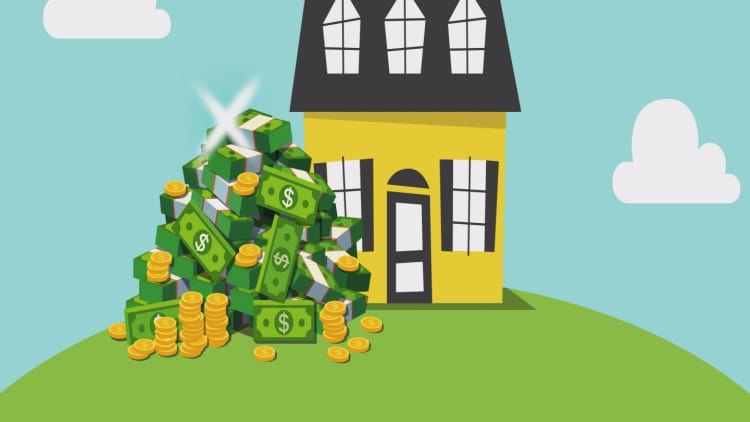
The gains in home prices took a slight breather in March. Nationally, values rose 6.5 percent annually, unchanged compared with February, according to the S&P CoreLogic Case-Shiller home price indexes. February's reading was revised higher.
Larger cities, however, are seeing bigger gains. The nation's 10 largest metropolitan markets saw home prices increase 6.5 percent annually, up from 6.4 percent in the previous month. The 20 largest cities posted a 6.8 percent annual increase, unchanged from the previous month.
"Looking across various national statistics on sales of new or existing homes, permits for new construction, and financing terms, two figures that stand out are rapidly rising home prices and low inventories of existing homes for sale," said David Blitzer, managing director and chairman of the index committee at S&P Dow Jones Indices. "Months-supply, which combines inventory levels and sales, is currently at 3.8 months, lower than the levels of the 1990s, before the housing boom and bust. Until inventories increase faster than sales, or the economy slows significantly, home prices are likely to continue rising."

Seattle, Las Vegas and San Francisco continue to lead in price gains. Seattle home values rose 13 percent annually. Twelve of the top 20 cities saw greater annual price increases in March compared with February.
"Any doubts that real, or inflation-adjusted, home prices are climbing rapidly are eliminated by considering Chicago; the city reported the lowest 12-month gain among all cities in the index of 2.8 percent, almost a percentage point ahead of the inflation rate," Blitzer said.
Nationally, home prices are 7.8 percent above their previous peak during the housing boom of 2006. Prices back then were driven almost entirely by a very loose lending environment. Borrowers with low credit could put no money down to buy and flip homes. Today, credit conditions are far more strict.
Home prices today are being driven entirely by strong demand and extremely low supply, especially at the entry level. Homebuilders have increased production steadily but are still well below historically normal levels, and far below the level of pent-up demand.


